Sampling Equipment for Conveyor Systems
Removal of a single sample from the moving belt, over the full material cross-section directly from the belt or at the belt discharge.
Representative means that all particles of a material quantity to be sampled have the same chance of being found in the analysis sample.
In line with this principle, SIEBTECHNIK supplies individual devices or complete systems for sampling, sample preparation and sample analysis of bulk materials and suspensions.
Sampling is the process of taking partial quantities (= individual samples) from the total quantity to be sampled (= delivery unit). Sample preparation includes all steps from sampling to analysis.
As the trade in large quantities of bulk goods, such as ores, fuels or fertilizers, involves high values, national and international standardization bodies define rules for sampling, sample preparation and analysis.
The process engineering design of systems, as well as the design of the machines themselves, is therefore always carried out in accordance with the relevant standards.
The term “sampling” refers to all operations required to take individual samples from a delivery unit in such a way that they correspond with the expected precision to the total quantity in qualitative terms and also without systematic error.
The subsequent “sample preparation” comprises all necessary work steps to bring the sample material (individual samples) obtained during sampling into the condition required for the subsequent tests.
When taking samples, it should be noted that bulk goods – especially raw materials and preliminary products – are often very inhomogeneous in terms of the quality characteristics that are essential for the assessment.
The more uneven a product is, i.e. the higher the variance of the product flow at the sampling point, the more frequently the sample should be taken. This is the only way to obtain a collective sample with sufficient precision. Taking a large number of individual samples inevitably leads to the processing of large aggregate samples and can be very costly. Therefore, the number of individual samples to be taken should be adapted to the nature of the goods to be sampled and the expected precision.
During the subsequent sample preparation, it must be ensured that the composite sample resulting from the individual samples reflects the homogeneity of the material to be sampled. In all work processes, it is essential to ensure that the sample is prepared without any significant loss of characteristics (e.g. water content).
The high demands to be placed on the technical design of sampling and sample preparation equipment result, among other things, from the very high ratio of the quantity of material to be tested to the total quantity to be assessed.
This can be illustrated, for example, by the ash content. A sample quantity of a few grams is sufficient for the analytical determination, but it must have the same ash content as the 200,000 t ship’s cargo from which this analysis sample was taken.
It is relatively easy to meet the requirement that the analytical sample to be tested must correspond to the corresponding delivery quantity in terms of the quality characteristics to be determined. It is only necessary to ensure that the samples are taken in sufficient quantity and frequency over the entire cross-section of the product flow and are not overlaid with periodic events of the process technology.
With stationary material, taking a representative sample is very difficult and can almost always only be realized with restrictions.
As already mentioned, the easiest way to take samples is on the moving material – on the belt, in the belt transfer or in the downpipe. It is important to ensure
that each sample is a cross-sectional sample of the entire material flow. The entire width and thickness of the material flow must therefore be recorded.
The quantity of material produced during sampling is decisive for the dimensions of the sampling vessel and, taking into account the sample frequency, for the design of the downstream equipment for crushing, dividing and collecting the sample material.
The weight of an individual sample is calculated according to the following numerical value equation.
The gap width of the removal vessel should be three times the nominal maximum grain size (nominal top size) of the material. The nominal maximum grain size specifies the grain size at which the residue on the corresponding sieve must not exceed 5 %. However, the gap width should not be less than 30 mm, even with finer material.
The speed of the sampling device must remain constant during the entire sampling process. When sampling from the falling material flow, the speed of the sampling vessel should not exceed 0.6 m/s if possible. Otherwise, the grain size could be selected by the sampling vessel. When sampling directly from the moving belt, the speed of the Hammer sampler should be at least 1.5 times the belt speed in order to minimize backwater effects caused by the crossing sampler.
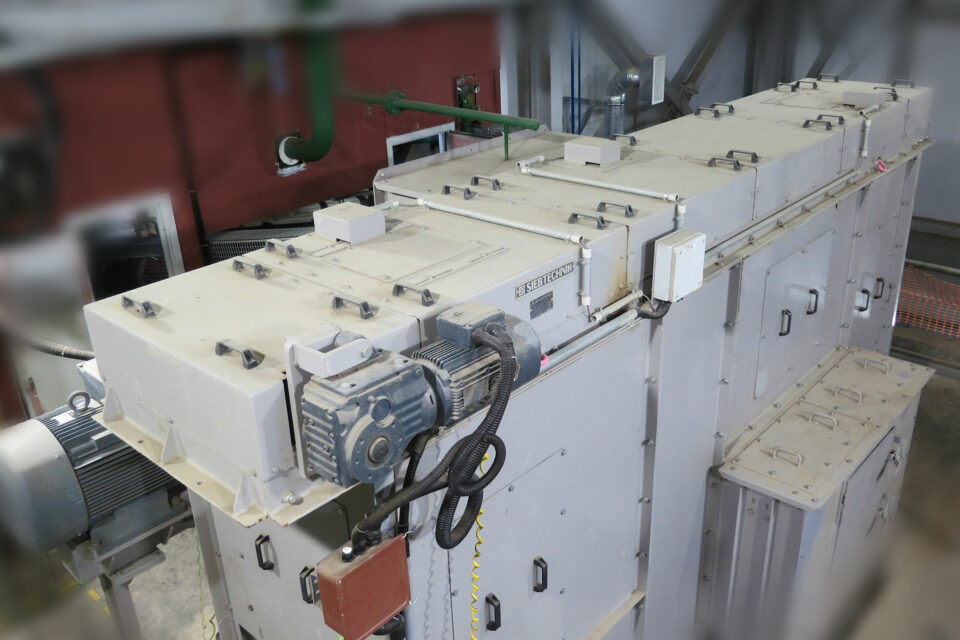
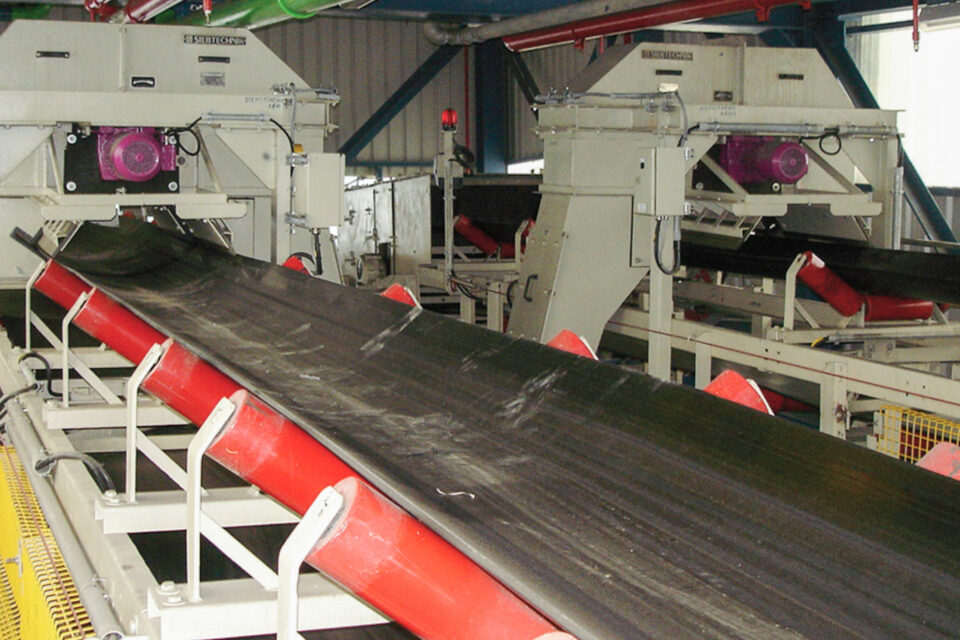
Depending on the particle size and the type of further analysis, the sample material must now be crushed so that it can be further divided. When selecting the comminution device, care must be taken at each comminution stage to ensure that machines are used that do not falsify the quality indicators. For example, a high-speed unit must never be used to determine water content. Due to the fan effect of this shredding device, a loss of water is to be expected.
When dividing the samples, the same applies as for sampling the individual samples, i.e. each particle must have the same chance of ending up in the sample. Otherwise the division step is not representative. Before each further dividing step, a comminution stage should always be carried out to reduce the particle size of the material and thus further homogenize it.
Sampling on moving material, sample preparation via beakers, mills and Dividers to the laboratory sample, sample transport via tube systems, sample preparation with vibratory disk mills and tablet presses to the analysis sample.
The basic equipment for a sampling system usually consists of the actual sampling device and the machines for sample preparation. The sample quantities are
usually crushed and reduced directly on site to a quantity that is acceptable to the laboratory for further analysis. This then requires at least one crushing stage and a sub-aggregate, as well as the Sample Collectors for storing the sample masses over a longer period of time.
In order to set up a representative sampling system, in addition to many normative requirements, the very different products, the local conditions at the installation site and the widely varying flow rates must also be taken into account. This normally requires an individual, customized solution from the devices presented below.

Removal of a single sample from the moving belt, over the full material cross-section directly from the belt or at the belt discharge.
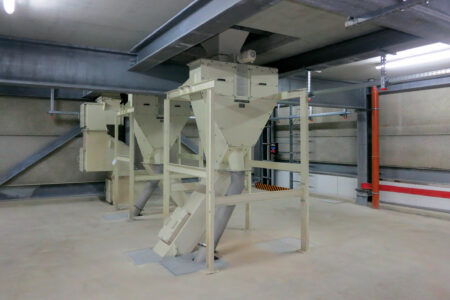
Safe sampling from unpressurized pipes or chutes with our cross-sectional samplers or point samplers.

Sampling of minerals, ores and concentrates during wet processing from unpressurized pipelines.
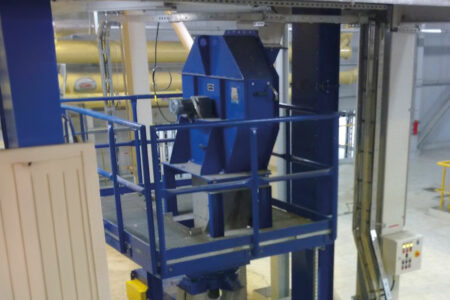
We have various devices in our range for dividing samples. With the Turnstile divider, the Rotary divider and the Rotary pipe divider, you can divide a wide variety of sample materials.
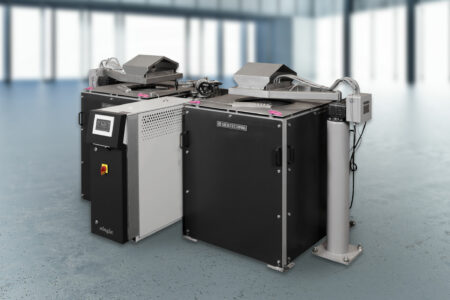
The Sample Dryers are used for the automatic, batch-wise drying and deagglomeration of moist or wet bulk samples.

We offer a wide range of solutions in the field of coarse, fine and ultrafine comminution of raw materials, chemically/thermally produced materials and in the recycling of valuable materials. In addition to pure particle size reduction, our extensive product portfolio can also be used to produce specific particle shapes and distributions. We also offer solutions for the mechanical activation of materials.

With our robot-based sample preparation and analysis systems, we free the laboratory from routine analyses and relieve employees of constantly repetitive tasks.
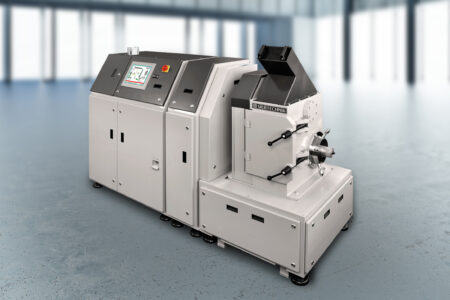
The fully automatic grinding and pressing system can be used to convert bulk material samples into test specimens for an XRF or XRD analyzer.

Find the right contact for your region.
We have the right solution for every task. And if not, we’ll work with you to find one. Get in touch with us!
Our specialists will be happy to advise you individually on site or remotely, and are available to answer any questions you may have. Send us a message using our
